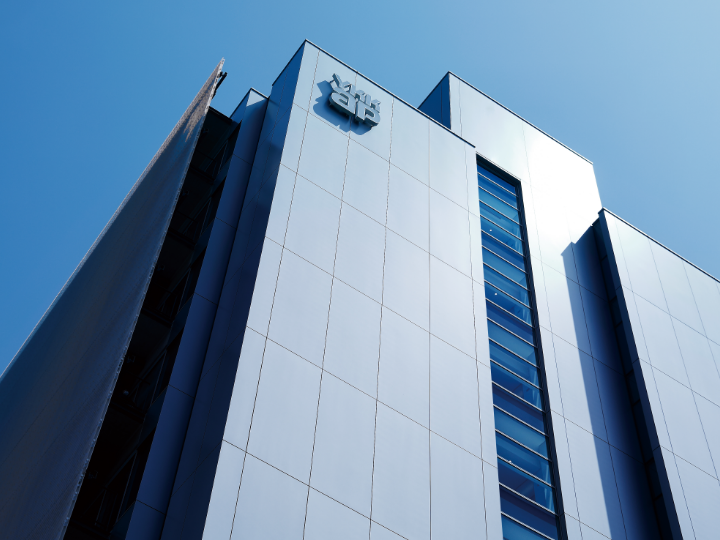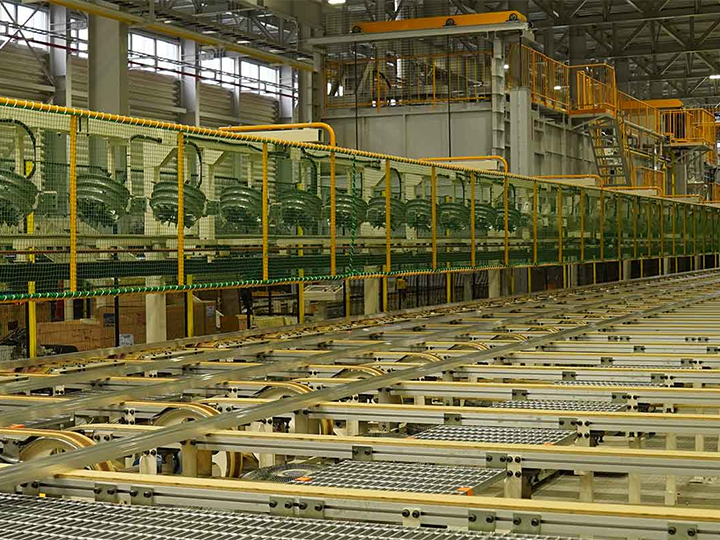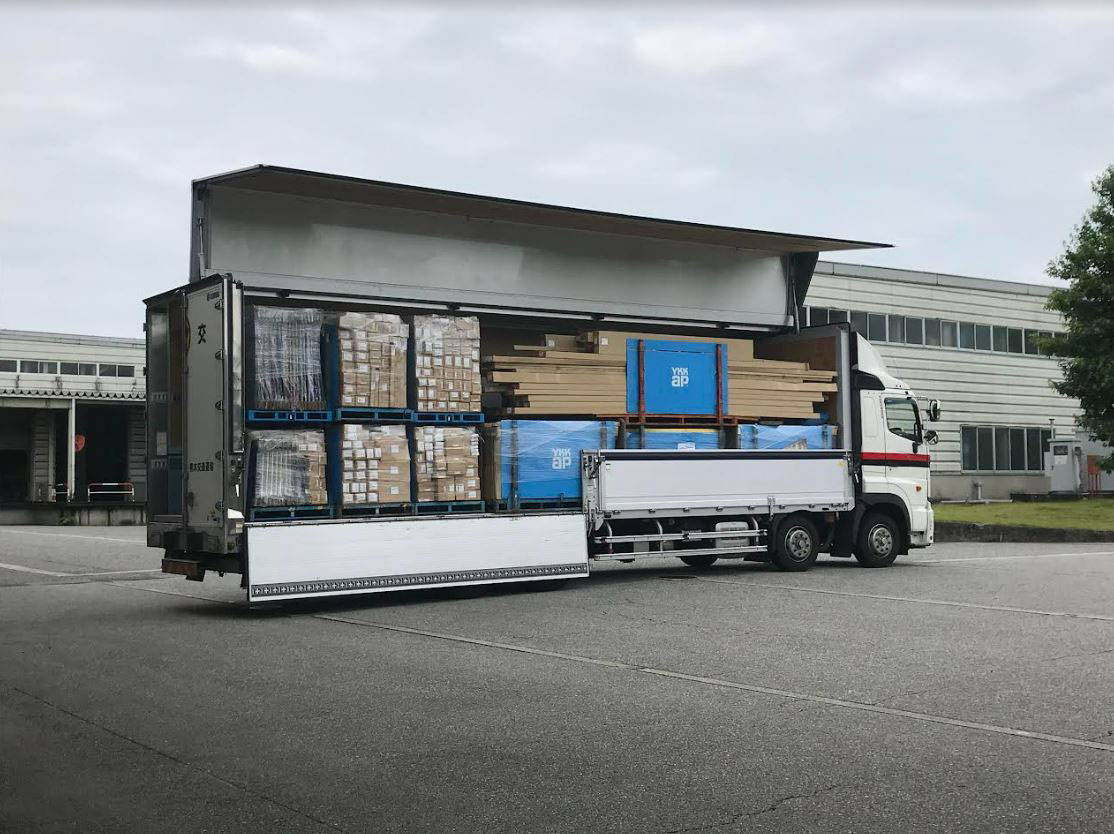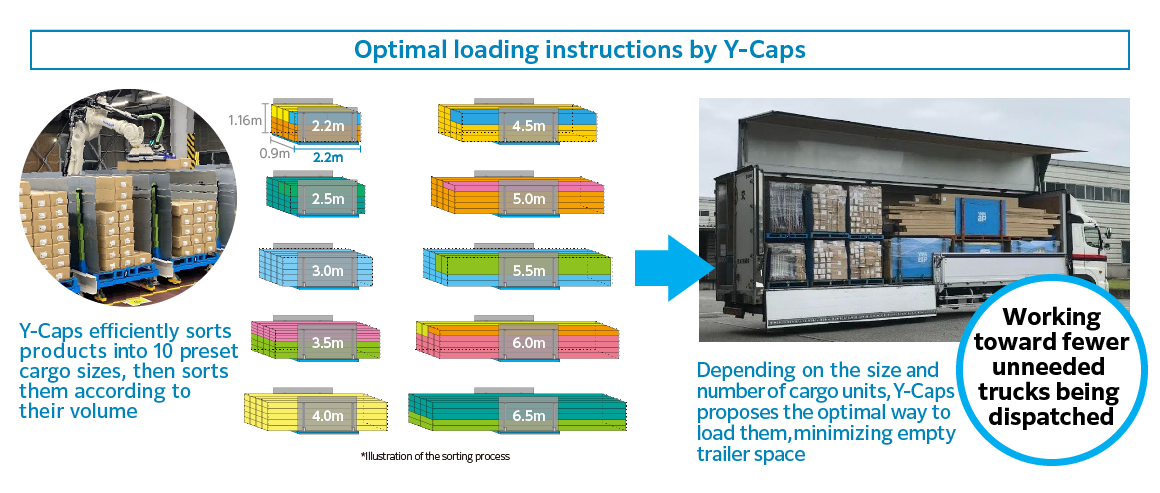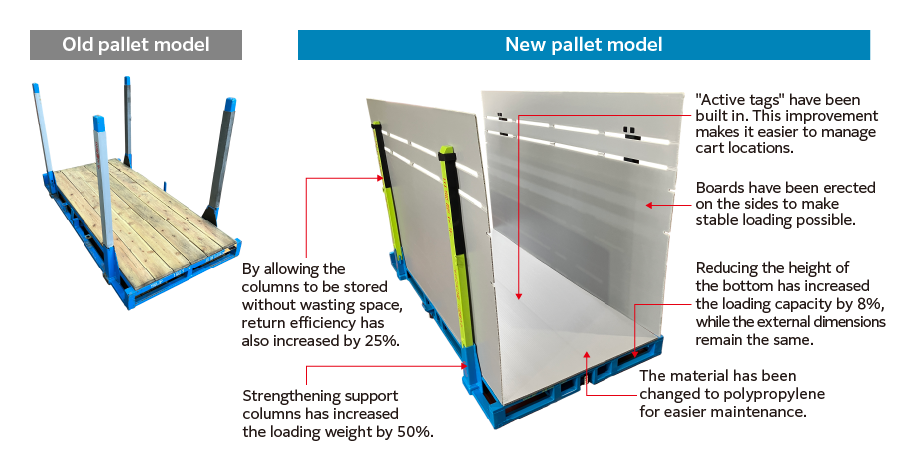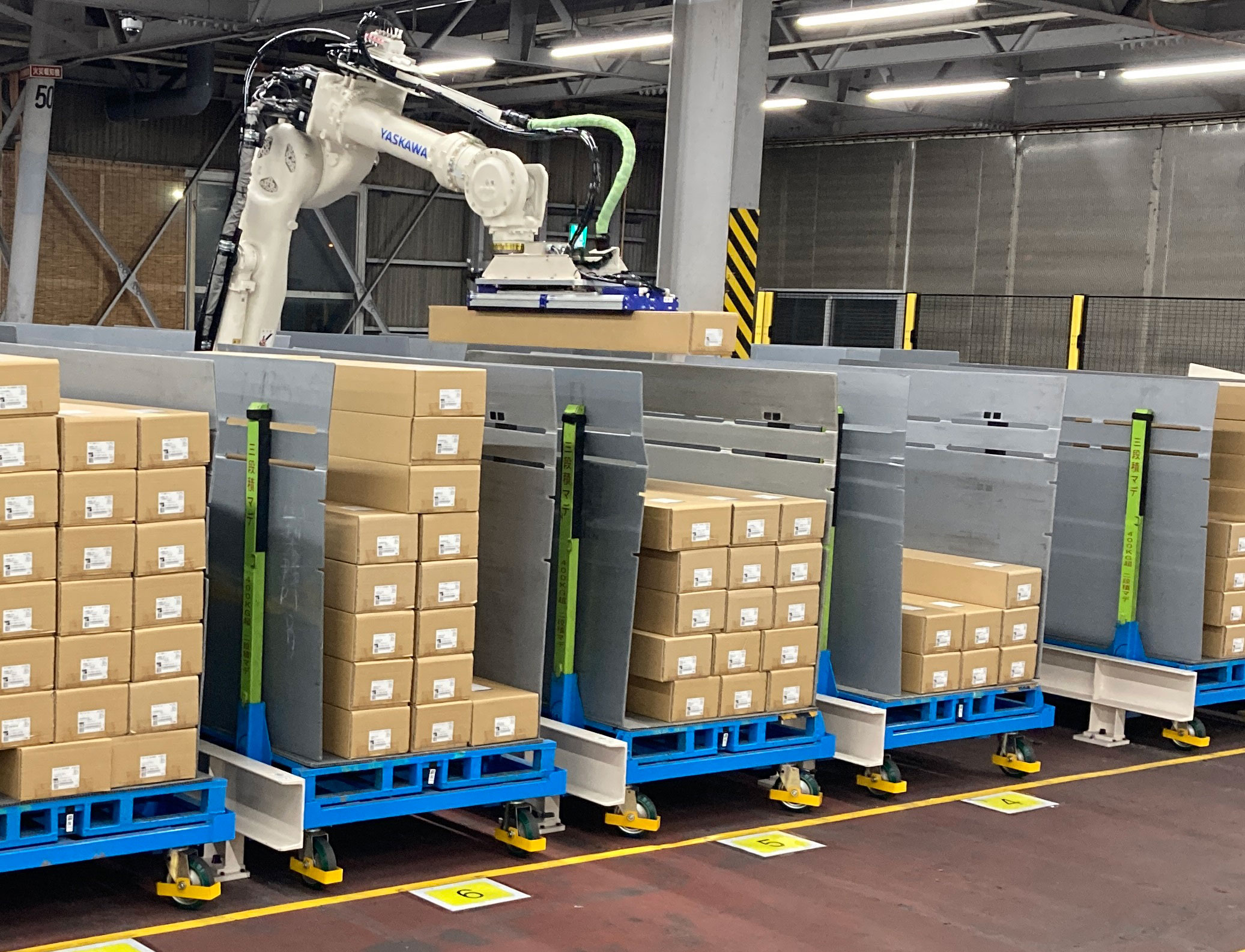- HOME
- Technologies
- Highlighted Technologies
- Optimal Loading and Highly Efficient Logistics Technology
Optimal Loading and Highly Efficient Logistics Technology
TechnologiesThe logistics industry in Japan is facing many challenges, such as a shortage of drivers and an aging driver population, as well as the need to comply with a new cap on overtime for drivers that was introduced in April 2024. Meanwhile, YKK AP manufactures a variety of products including windows, doors, and exteriors, but they vary in shape, size, and weight, which makes logistics more challenging.
In order to address these issues, YKK AP is promoting “unit load system”—in which cargo is transported in units such as pallets—with the aim of improving efficiency. The YKK AP technologies which made this possible are palletizing equipment and Y-Caps (a stacking optimization system).
At manufacturing plants, we load windows, doors, and shutters which are produced on their respective lines onto pallets, then load those pallets onto trucks for shipping. These pallets are loaded with a variety of products, and they are not necessarily the same size or from the same lot. In order to efficiently load products onto pallets of predetermined sizes, we use a system called Y-Caps to designate cargo on an optimally stacked pallet as one unit, then figure out the number of units. The system provides optimal instructions for loading trucks.
Although a pallet is two meters in length, it can end up being up to 6.5 meters in length when fully loaded with products. We had traditionally relied on employees’ experience and intuition to figure out how to efficiently load these units of varying sizes onto loading platforms for ten-ton trucks. Now, we assume that there are 10 patterns for shipping and 108 combinations of those patterns for truck loading platforms, and show the optimal stacking method at the point where the load is finalized. The system allows for the identification of available space, which makes it possible to consider additional cargo in advance, and implementing more efficient ways to load products has led to fewer unneeded trucks being dispatched.
We have also developed new pallets to make loading even more efficient. In comparison to existing pallets, we have been able to achieve an 8% increase in loading capacity, a 50% increase in loading weight, and a 25% increase in return efficiency. In addition, by taking active tags which emit radio waves themselves and embedding them into the bottoms of the pallets, it is now possible to track inventory numbers and movement numbers, and detect losses, as well, via antennas at locations across the country. We have set up boards on the sides of the pallets to allow for stable loading, and their bottoms have been changed from wood to polypropylene to make maintenance easier.
We are also working on manpower-saving and labor-saving initiatives. Our proprietary palletizing equipment recognizes the sizes of products to be loaded randomly, and robots then stack them based on their destination. Since there is no limit to the combinations of the types and quantities of products to be stacked, we have developed software that calculates the most efficient stacking method every time. We have also developed robot hands for palletizing, which incorporate proprietary technologies such as the capacity to judge where to grip products.
At YKK AP, we will continue to push forward with making logistics more sophisticated, which includes efforts such as streamlining deliveries from distribution centers to field sites.


